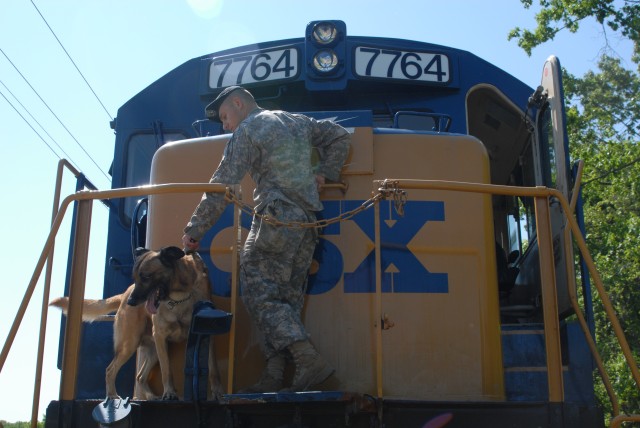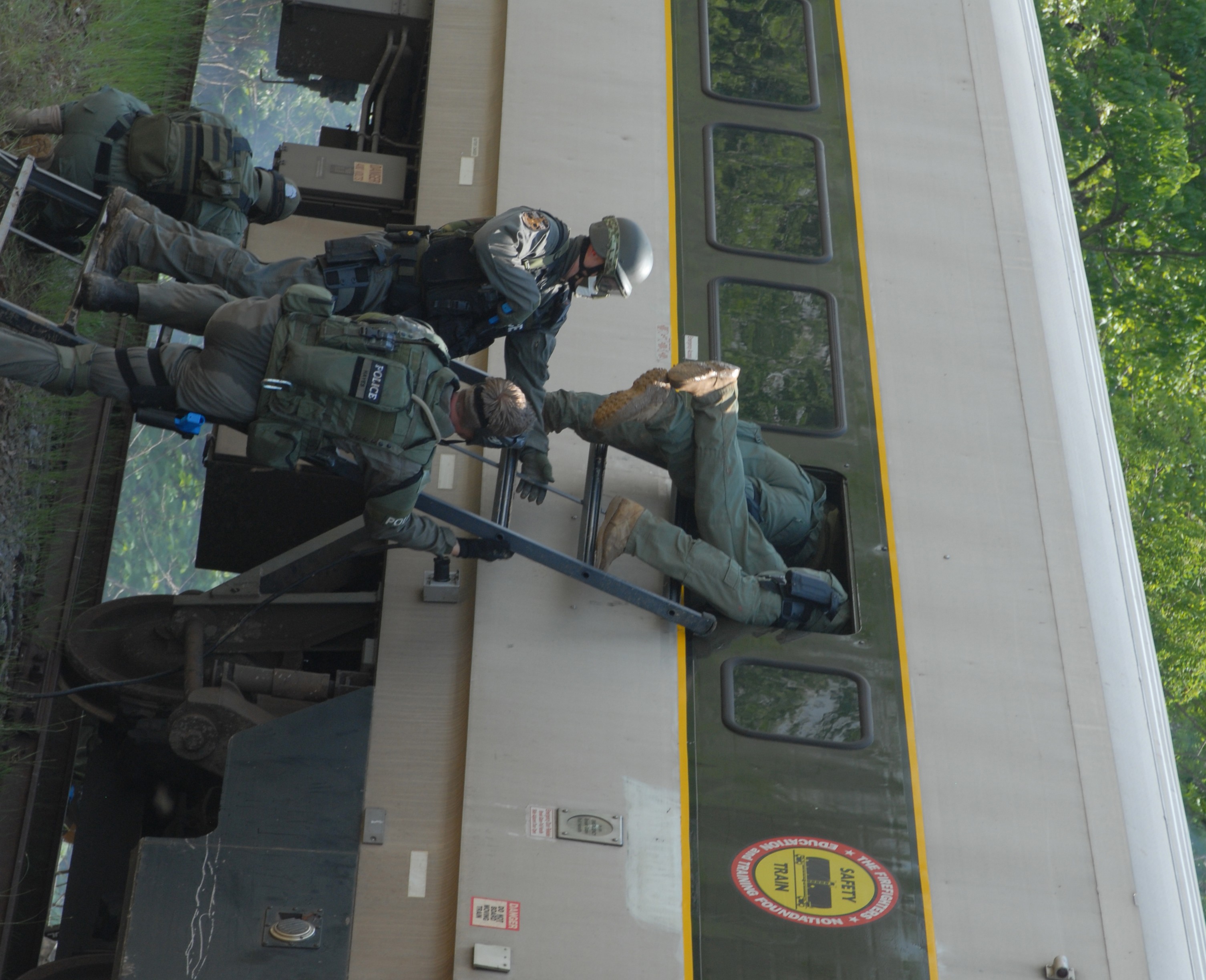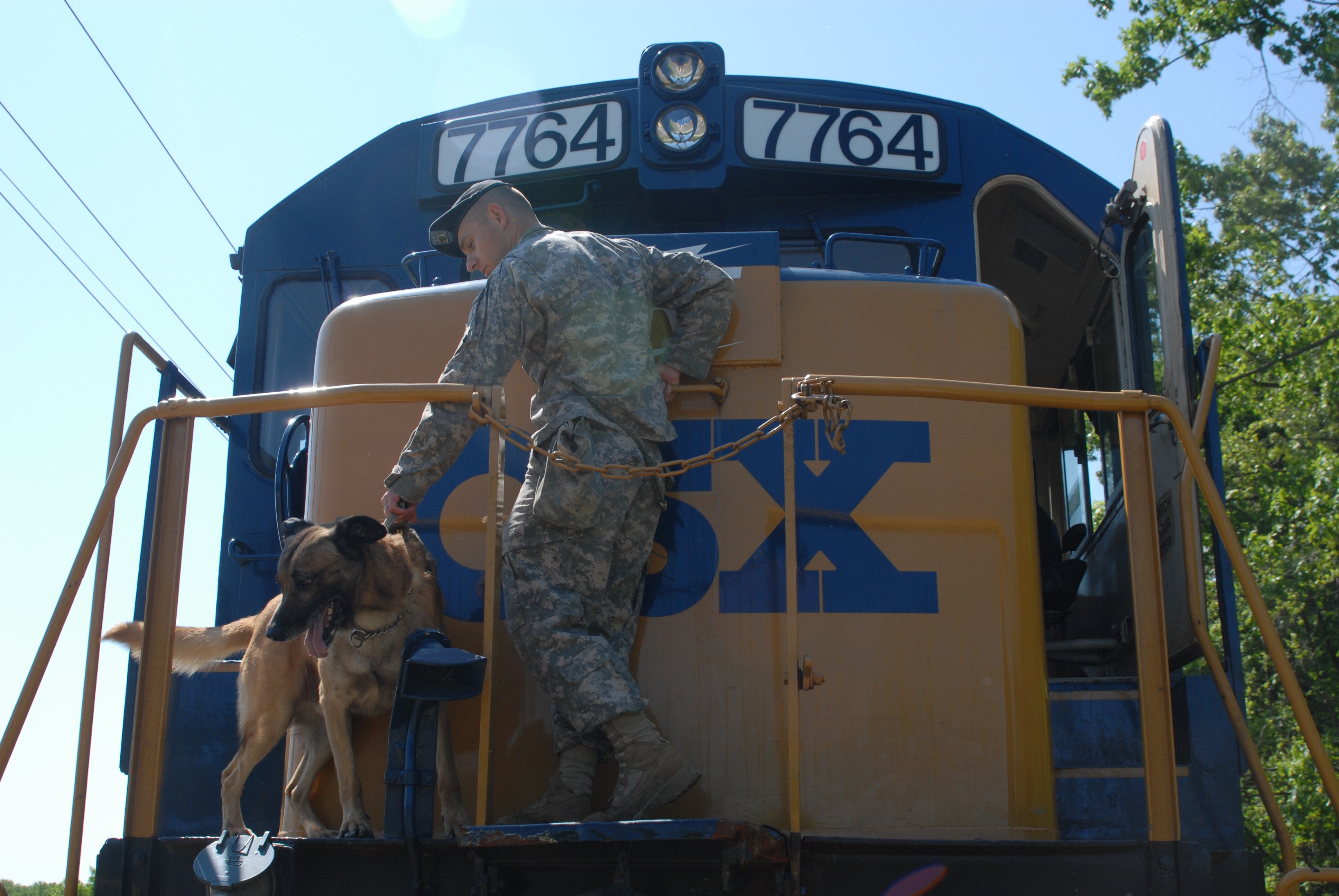FORT KNOX, Ky. Aca,!" Training is nothing new on Fort Knox. That's the post's mission - to instruct Soldiers in training, cavalry scouting, and becoming tankers.
But a different kind of training took place last week .
Four different law enforcement agencies participated in training Aca,!" on a train.
Really Aca,!" it was train training Aca,!" a real live locomotive with passenger cars, sleeper cars, and tanker cars.
The CSX Railroad Corporation developed a rapid response team after the terrorist attacks of Sept. 11, 2001, and subsequent incidents involving trains throughout the world. There have been 438 incidents on passenger trains resulting in 1,200 fatalities since then.
While there have been no attacks on U.S. trains, CSX understood the best time to prepare is before an attack, not after.
As the largest carrier of hazardous material in the country and the owner of more than 21,000 miles of rail lines in the eastern U.S., CSX trained its own rapid response team.
"We learned from the best assault police in the world - the Germans," said J.T. Ison, a CSX policeman, member of the RRT, and a team leader for the three-day training.
Thomas Kroll, a former German officer with the SEK - the German equivalent of an American SWAT team - is now a permanent member of the CSX RRT.
The CSX mission has expanded to include a tactical rail interdiction training program. The program is counter-terrorism training specifically designed for "tubular targets," that is, those with long bodies and narrow access, like trains, airplanes, and school buses. Further, the training is offered to other agencies without cost.
"Our goal is to train all the metro police departments in the U.S. ," said Courtney Cooper, another team leader and member of the CSX RRT. "We want to teach them how to assault and neutralize trains."
In addition, the training exercises generally cover some hazmat familiarization and types of tank cars used in the U.S. as well as "Railroad 101," a class to give law enforcement officers a general understanding of rail cars individually and trains as a whole.
In military terms - or any other terms, for that matter Aca,!" CSX is meeting its mission.
"The RRT has trained 73 teams over the past four years," said Bob Flake, the deputy chief of the CXS Police Department, "and more than 700 (specialized) police operators."
The agencies which participated in the training exercise last week included the Kentucky State Police SWAT team, Louisville Metro's SWAT team, the CSX Police, and Fort Knox's 34th Military Police Special Response Team. To add more realism, members of the Safety Directorate, Public Affairs Office and the Fort Knox command group played roles in the hostage scenario.
"The magnitude of this training is huge," the Armor Center Command Sgt. Maj. John Troxell said. "Our homeland defenses are working with our armed forces to improve our skills. We are fixated on Iran and Iraq as our number one threat, but in reality, Al Qaeda has global resources. It's important for us to work with our home security agencies to ensure the safety of our folks back home."
After the final joint exercise, Cooper said they love coming to Fort Knox to train.
"The cooperation was unbelievable. We never heard the word 'no,'" he said.
After the other agencies had departed, Ison and the MP personnel talked about future training possibilities and realized a very practical avenue was readily available.
According to Ison, the train wouldn't be relocated immediately, so he suggested the MPs could continue to train with their bomb detection dogs. By giving the dog teams access to the train, they would gain some familiarity with the unique aspects of the tubular design and perhaps identify some of challenges a train would present for dogs.
"The hazmat cars would probably have smells the dogs have never encountered," Ison said.
As a result, the canine teams spent most of the day Monday on clearing and detecting drills in the train.
"The camaraderie as well as the support we get from the patrol units up to the staff and command is good," said Ison. "We've trained out here for the past four years in various sites - the range, rappel tower, and schools. We have a great relationship."






Social Sharing